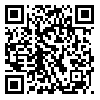Volume 19, Issue 124 (2022)
FSCT 2022, 19(124): 197-206 |
Back to browse issues page
Download citation:
BibTeX | RIS | EndNote | Medlars | ProCite | Reference Manager | RefWorks
Send citation to:



BibTeX | RIS | EndNote | Medlars | ProCite | Reference Manager | RefWorks
Send citation to:
Salehi F, Cheraghi R, Rasouli M. Influence of sonication power and time on the osmotic dehydration process efficiency of banana slices. FSCT 2022; 19 (124) :197-206
URL: http://fsct.modares.ac.ir/article-7-59108-en.html
URL: http://fsct.modares.ac.ir/article-7-59108-en.html
1- Associate Professor, Faculty of Agriculture, Bu-Ali Sina University, Hamedan, Iran , fs1446@yahoo.com
2- MSc Student, Faculty of Agriculture, Bu-Ali Sina University, Hamedan, Iran
3- Assistant Professor, Faculty of Agriculture, Bu-Ali Sina University, Hamedan, Iran
2- MSc Student, Faculty of Agriculture, Bu-Ali Sina University, Hamedan, Iran
3- Assistant Professor, Faculty of Agriculture, Bu-Ali Sina University, Hamedan, Iran
Abstract: (2541 Views)
Ultrasound is composed of sound waves with frequency beyond the limit of human hearing. Ultrasound (sonication) can be used directly for drying or as a pretreatment before the drying process. In this study, the effect of sonication power (at three levels of 0, 75 and 150 watts), ultrasound treatment time (at three times of 10, 15 and 20 minutes) and sucrose solution concentration (at three levels of 30, 45 and 60 °Brix) on the weight reduction percentage, solid gain percentage, amount of moisture removed and rehydration percentage of banana slices treated by osmotic-ultrasound treatment were investigated. With increasing ultrasonic power, increasing in treatment time and also increasing osmotic solution concentration, the weight reduction percentage and consequently the amount of moisture removed from banana slices were increased. The weight reduction percentage of banana slices increased from 8.53% to 14.28% by increasing the ultrasonic device power from zero to 150 watts (P<0.05). With increasing sonication power, the solids gain of the samples decreased, which indicates a decrease in sucrose absorption by dehydrated samples. The solids gain percentage of banana slices decreased from 2.8% to 1.4% by increasing the ultrasonic device power from zero to 150 watts (P<0.05). With increasing osmotic treatment time, more moisture was removed from banana slices and as a result, the moisture loss percentage for these samples increased. With increasing sonication power, rehydration percentage of the samples increased, but no significant difference was observed between the samples (P<0.05).
Article Type: Original Research |
Subject:
Food Chemistry
Received: 2022/01/29 | Accepted: 2022/04/4 | Published: 2022/05/31
Received: 2022/01/29 | Accepted: 2022/04/4 | Published: 2022/05/31
Send email to the article author
| Rights and permissions | |
 |
This work is licensed under a Creative Commons Attribution-NonCommercial 4.0 International License. |









